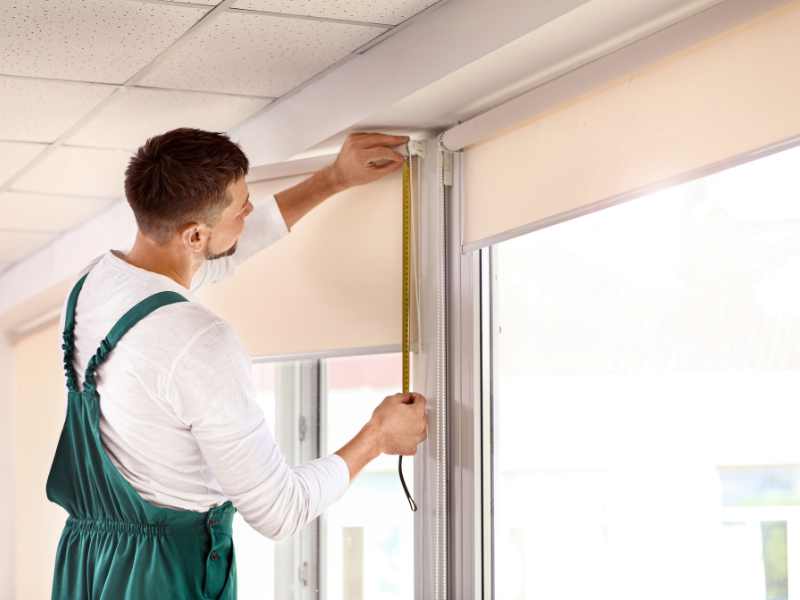Replacing windows in Texas involves various factors. The cost to replace windows in Texas depends on the type of window, the size, and the installation process. Typically, homeowners spend between $300 and $1,000 per window, including labor costs. To get a precise estimate, you should contact a window contractor for a free estimate based on your specific needs.
Types of Windows and Their Costs
When planning a window replacement project, consider multiple quotes to find the best value. Many window manufacturers offer various window styles and materials, so you can choose the right solution for your home’s windows.

Vinyl Windows
Vinyl windows are a popular choice due to their affordability and energy efficiency. They cost between $300 and $700 per window, making them a cost-effective solution for many homeowners. Vinyl frames also provide good insulation, reducing energy bills.
Wood Windows
Wood windows offer a classic look and excellent insulation. They typically cost between $600 and $1,200 per window. While wood windows are more expensive, they add significant curb appeal and can be a good investment for long-term savings.
Fiberglass Windows
Fiberglass windows are durable and energy-efficient, costing between $500 and $1,500 per window. These windows resist warping and provide better protection against the elements, contributing to lower energy bills over time.
Composite Windows
Composite windows combine materials like wood and vinyl to offer durability and low maintenance. They range from $400 to $1,200 per window. This window type provides a balance between cost and performance.
Casement Windows
Casement windows, which open outward with a crank, cost between $400 and $1,000 per window. These windows are known for their energy efficiency and are typically found in modern homes.
Double-Hung Windows
Double hung windows, featuring two operable sashes, cost between $300 and $900 per window. This style is versatile and easy to clean, making it a common window type in many homes.
Picture Windows
Picture windows, which do not open, range from $300 to $1,200 per window. They provide large, unobstructed views and are energy-efficient due to their fixed nature.
Single-Hung Windows
Single-hung windows, with one operable sash, cost between $200 and $600 per window. They are a budget-friendly option and offer good ventilation for smaller spaces.
Specialty Windows
Specialty windows, such as bay or arched windows, cost between $800 and $2,500 per window. These custom-ordered windows add unique design elements and can enhance a home’s aesthetic.
Energy-Efficient Windows
Energy-efficient windows, featuring low emissivity (low e) glass and krypton gas, cost between $500 and $1,500 per window. They provide long-term savings on energy bills by improving insulation and reducing heat transfer.
Factors Affecting Window Replacement Costs
Several factors influence the cost of window replacement. These include the type of window, labor costs, and additional features like energy efficiency. Understanding these elements can help you budget for the right solution.

Window Size
The size of the window greatly influences the cost of the replacement window. Larger windows require more materials and time to install, which increases the total cost. Smaller windows are less expensive to replace. When planning a window replacement, it’s important to measure accurately. Homeowners can expect to pay more for larger windows.
Window Style
The style of the window also affects the cost. Double-hung windows, for example, typically cost more than single-hung windows. Casement windows can also have a higher price tag due to their design. Sliding windows might be a better deal if you want a simpler style. Different window styles offer various benefits and prices.
Window Material
Materials used in windows, such as wood, vinyl, or fiberglass, impact the cost of replacement windows. Wood windows tend to be more expensive due to their aesthetic appeal and durability. Vinyl windows are often more affordable and require less maintenance. Fiberglass frames offer a balance between cost and energy efficiency. The choice of material can significantly affect the total cost.
Installation Complexity
The complexity of the installation process influences costs. Installing a new window in a wall without an existing window opening is more complex and costly. Replacing old windows in an existing frame is usually simpler and cheaper. The need for custom order windows or special tools can increase costs. Complex installations require more labor and time.
Window Type
The type of window you choose will affect the overall cost. Common window types include double-hung, casement, and sliding windows. Each type has different installation methods and materials. Double-hung windows are often used for their versatility. Casement windows might offer more protection and better energy efficiency.
Window Frame
The window frame material impacts both cost and performance. Wooden frames are expensive but offer a classic look and good insulation. Vinyl frames are less expensive and require less maintenance. Fiberglass frames are durable and provide better energy efficiency. Aluminum frames are also an option but might lead to higher energy bills. The frame choice affects both the initial cost and long-term savings.
Energy Efficiency Features
Energy-efficient windows, such as those with Low-E coatings, can reduce energy bills. These windows often come with a higher price tag due to their advanced features. Over time, energy-efficient windows can lead to significant savings. Homeowners should consider the long-term benefits versus the upfront costs. Adding features like double glazing can also improve energy efficiency.
Labor Costs
Labor costs vary depending on the complexity of the installation and the region. For example, installing windows in an older home may require more labor due to existing window conditions. Labor costs are also higher in urban areas compared to rural ones. The average cost for labor should be factored into the total replacement cost. Always consider getting a free consultation to understand labor charges better.
Customization Options
Custom-ordered windows can increase the replacement cost. Standard sizes are usually less expensive. Customizing windows for unique shapes or sizes requires more materials and labor. This customization provides a perfect fit and enhances the home’s aesthetic appeal. The cost for custom windows is often justified by the enhanced look and performance.
Additional Features
Additional features like glass coatings, noise reduction, and enhanced security can increase costs. These features provide added benefits and protection for the home. While these options may raise the initial cost, they can improve the home’s value. Homeowners must weigh the benefits against the higher costs. Choosing the best windows involves balancing features and budget.
Labor Costs for Window Installation in Texas
Labor costs for window installation in Texas can vary widely, depending on several factors. Typically, urban areas like Houston and Dallas have higher labor costs compared to rural regions. On average, homeowners in Texas can expect to pay between $150 and $800 per window for labor. This range depends on the complexity of the installation, such as replacing old windows or installing new windows in existing frames. Regions with a higher cost of living often have higher labor costs. It’s essential to get a free consultation to understand the specific labor costs for your area. Comparing quotes from different installers can help you get a better deal on your window replacements.

DIY vs. Professional Installation: Cost Analysis
Choosing between DIY and professional window installation affects the overall cost. DIY might save money upfront but can lead to higher expenses if mistakes occur. Professional installation typically ensures quality but comes with higher labor costs.
DIY Window Replacement
Pros:
DIY window replacement saves money on labor costs. By undertaking the project yourself, homeowners can significantly reduce the overall cost of replacement windows. Homeowners can spend less on installation by doing it themselves. This approach offers control over the project’s pace and quality, ensuring that the homeowner’s standards are met without compromising on the details.
You can work on your schedule with a DIY project. There is no need to wait for professional availability, which can sometimes take weeks or even months. This flexibility can reduce project delays and allow you to manage the project at your convenience, making it easier to balance with other home improvement tasks or personal commitments.
DIY allows for personal satisfaction. Completing the task yourself can bring a sense of achievement, knowing you have personally enhanced your home. It also helps in gaining new skills that can be applied to future projects, increasing your confidence in handling home repairs. Additionally, by choosing to install more windows, you can improve your home’s energy efficiency and overall aesthetics.
Cons:
DIY window replacement may lead to mistakes. Incorrect installation can damage the window and the surrounding area, leading to additional repair costs. This can result in higher replacement windows costs, negating any initial savings from not hiring a professional. Mistakes can also compromise the effectiveness of features like low e coating, reducing the energy efficiency of the new windows.
Lack of professional tools and expertise can be a drawback. Professionals have access to specialized tools that ensure proper installation, tools that are often not available to the average homeowner. This can affect the window’s performance and lifespan, especially when dealing with more complex installations like a wood window. Without these tools, achieving the same level of precision can be challenging.
DIY projects can take more time. Without the experience, tasks may take longer to complete, potentially stretching a project that could take professionals a few days into several weeks. This can delay the whole home window replacement process, disrupting daily life and possibly exposing your home to weather elements if the windows are not installed promptly.
Benefits of Hiring Professionals
Professional installation ensures high-quality work. Experts have the right skills and tools for the job, leading to a precise and durable finish. This results in fewer errors and a better finish, maintaining the integrity of your home. Additionally, they can handle complex installations like older windows that require careful removal and replacement.
Hiring professionals can save time. They can complete the project faster than a DIY approach, allowing you to enjoy your new windows sooner. This efficiency can reduce the overall window cost by minimizing the potential for costly mistakes and ensuring that the job is done correctly the first time.
Professionals often provide warranties. This coverage can protect against future issues, offering peace of mind that any problems will be addressed without additional cost. It can save money on potential repairs and replacements, as the warranty can cover defects in materials or workmanship. Moreover, professionals can advise on the best options for your home, including factors like the benefits of low e glass coating or other energy-efficient features.
Financing Options for Window Replacement
Homeowners in Texas have several financing options for window replacement. These include financing plans, loans, and grants. Financing plans allow for payments over time, making it easier to manage the window cost. Home improvement loans are another option. These loans offer competitive interest rates and can cover the entire replacement windows cost. Additionally, some federal and state grants are available. These grants aim to help homeowners with energy-efficient upgrades, such as low e coating windows.
Grants and rebates from utility companies can also provide financial assistance. These programs often promote energy efficiency. Homeowners can reduce the replacement windows cost by taking advantage of these offers. It is important to research and compare different options. This helps in finding the best financing plan that suits individual needs.
Seasonal Considerations for Window Replacement
The season when you replace your windows can impact the overall cost. Spring and fall are ideal due to mild weather and lower demand. Summer and winter have unique challenges but also offer potential savings based on seasonal demand and discounts.
Spring and Fall
Spring and fall are the best times to replace windows. The weather is mild, which makes installation easier and more efficient. Seasonal demand is lower, so you might get a better deal on the average cost of replacement windows.
Summer
Summer is another good time for window replacement. However, higher demand can increase the average cost. Getting a free estimate early can help you find the right solution and manage labor costs effectively.
Winter
Winter is the least popular time for window replacement. Cold weather can complicate installation, but lower demand can mean lower prices. A few factors like labor cost and seasonal discounts can make winter a viable option for budget-conscious homeowners.
Hidden Costs in Window Replacement Projects
When planning a window replacement project, consider potential hidden costs. Permits may be required, adding to the overall expense. Disposal fees for old windows can also increase costs. Unforeseen repairs, such as fixing damaged frames or walls, can arise. These factors contribute to the final replacement windows cost. Proper planning and budgeting can help manage these unexpected expenses.
Final Thoughts
Window replacement is a significant home improvement project that requires careful consideration of various factors. From choosing the right type of window to deciding between DIY and professional installation, homeowners in Texas have many options to explore. By understanding the costs involved, considering financing options, and being aware of potential hidden expenses, individuals can make informed decisions that balance their budget with their desired outcomes. Ultimately, investing in quality windows and proper installation can lead to improved energy efficiency, enhanced home aesthetics, and long-term savings on energy bills.
To get started on your window replacement project and receive personalized advice, contact us for a free consultation and estimate today.
